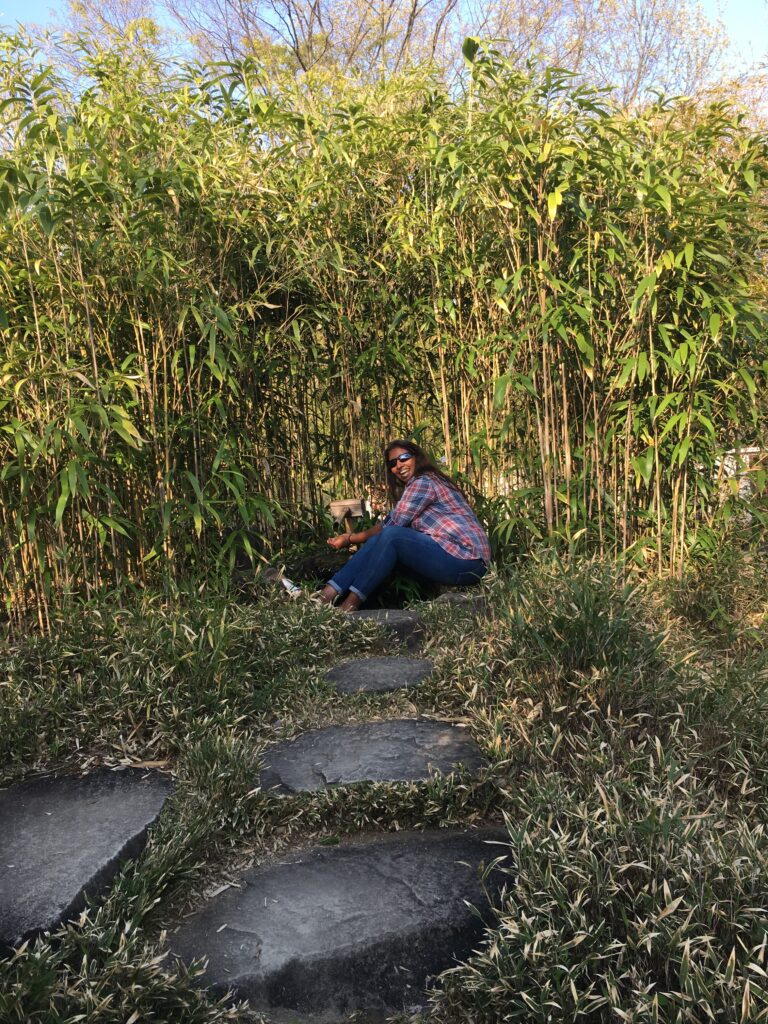Ultimate 1 day guide to the best of Himeji, Japan
Ultimate 1 day guide to the best of Himeji, Japan
Himeji is a pretty coastal city in the Kansai region of Japan, in the Hyogo Prefecture. The city is home to one of Japan’s historic castles, Himeji Castle that draws visitors from all over the world to its unique design that is often compared to ‘wings’.
Himeji is easily accessible from Kyoto or Osaka (see below) and makes a brilliant day trip. My ultimate 1-day guide to the best of Himeji, Japan covers castles, gardens and temples — just three places which should be in any visit list to this region.

OUR BEST READ ARTICLES ABOUT JAPAN
1 | One Day Guide to the Best of Hiroshima City Travel
2 | Two Days on the Best of Hiroshima and Miyajima Island
3 | Ultimate Guide to Things to do in Miyajima Island
5 | The Unmissable Best 5 in Kyoto
6 | Kyoto City Guide
7 | The Two Best Flea Markets in Kyoto
8 | 5 Etiquette to observe at a Shinto Shrine in Japan
What to see and do in Himeji, Japan
There are three places which you should not miss when visiting Himeji. All three mentioned below are located within easy reach of each other. These are:
1 | The popular Himeji Castle;
2 | The traditional Edo-style garden called Koko-en;
3 | The Engyoji Temple at Mount Shosha;
1 | HIMEJI CASTLE

Himeji Castle is a hilltop landmark, a 17th century castle. Often called Hakuro-jo or Shirasagi-jo which means “White Egret Castle” because of its white façade and its appearance as a bird taking flight.

Here are some aspects of Himeji Castle which I found interesting and make a worthwhile visit.
1.1 | Himeji Castle is UNESCO World Heritage Site

Himeji Castle was constructed on an existing fort in 1601 under the order of Tokugawa Ieyasu, the first shogun of the Tokugawa Shogunate. Tokugawa Shogunate ruled Japan from 1600 until the Meiji Restoration in 1868. Ieyasu ruled Japan with a mission to unify the country. He built one castle in each province and good defences to stave off attacks.
This white castle has not seen a battle since it was built and had stood strong throughout the years, despite the bombings during the World Wars and earthquakes in Japan. The Castle is a National Treasure of Japan and a UNESCO World Heritage Site since 1993. It is one the few original castles from Japan’s feudal period that has moats, passageways and cherry trees.

The Castle is visible even as you begin your walk from Himeji Station. As you approach the Castle, there are various beautiful spots that make great photo opportunities. When you arrive, enter through the Otemon Gate, purchase your tickets and walk through the passageway to the Main Keep.

1.2 | The Main Keep and Interior of Himeji Castle
Himeji Castle has six floors and the Main Keep of the top floor offers spectacular views of the castle grounds and across the city itself, surrounded by beautiful mountains in the distance.





The Main Keep is the largest structure of the Castle and there are six floors. The staircases are steep, and it gets steeper and narrower as you climb higher. The climb to the top floor is one long queue, so take your time and try and capture the views of the castle grounds. Also, take note of the loopholes used by the archers to defend the Castle during attacks.
1.3 | Gardens surrounding Himeji Castle

When you have completed the Main Keep, make time to explore the gardens surrounding the Himeji Castle. This vast ground offers great photo opportunities. I visited Himeji Castle towards the end of the cherry blossom season and was fortunate to capture the beauty the season brings to Japan.


The sight of cherry trees planted in a long line with pink and white petals against the blue sky is simply awesome! There is an area of cherry blossom trees which serves both as a picnic and resting area offering shade.
1.4 | Meeting a Talented Artist at Himeji Castle
During my visit, I was fortunate to meet an incredibly talented gentleman called, Pierre, who is an artist/sketcher. His passion is to sketch every temple, every castle in Japan and China. He had been doing this for five years already. His book of sketches was beautiful, he captured every detail of the architecture and its history seamlessly.


Pierre informed me that he lives in Paris. Unfortunately, Pierre does not have a website/blogsite or a social media where he showcases his work. I want to mention him here, in this post because his work and his passion should be merited (I do have his consent to mention him in my post). I hope that one day, Pierre will find himself reading this post on the best of Himeji! 😊
1.5 | Travel tips and Useful information on Himeji Castle, Himeji
Useful information:
1 | Give yourself anything between 2 to 4 hours;
2 | Entrance fee: 1050 Yen for adults | Students: 360 Yen (Prices correct at time of update, Aug 6, 2022).
3 | Hours: Generally, 9 a.m. to 5 p.m.; Summer (Apr 27 to Aug 31) 9 a.m. to 6 p.m.
4 | Last entry is an hour before closing. As well, the Main Keep is not wheelchair accessible.
1.6 | Getting to Himeji Castle from Himeji Station

Take the North exit at Himeji Station. It is about 1km. It is not far at all when you walk along the Otemae-dori Street, the shops are a good distraction and the sight of the Castle is straight ahead of you.
After visiting Himeji Castle, you may wish to take a break or have a picnic under the cherry blossom tree before making your way to Koko-en Garden.
2 | KOKO-EN GARDEN




Koko-en Garden is 3.5 hectares, of traditional Edo-style garden just next to Himeji Castle. It is laid out in nine-themed sections, with water features, pagodas and step-stones projecting tranquillity. You can take as long as you like here and can take up to 2 hours or more by the time you walk around all nine gardens. It took me almost 3 hours.
Koko-en at Himeji is home to nine gardens. Each with individual themes such as a Bamboo Garden, and it is really worthwhile to spend some time here
3 | MOUNT SHOSHA AND ENGYOJI TEMPLE
To the Northwest of Himeji City Centre, lies Mount Shosha which is home to Engyoji Temple, a Buddhist Monastery Mount Shosha can be accessed in thirty-minutes by bus and ropeway from Himeji city centre.
The Engyoji Temple buildings are dotted over a spacious, densely forested area on the mountain top. This Buddhist Temple is a Temple of the Tendai Sect and was founded by Shoku Shomin in 966. The well-preserved wooden buildings of Engyoji Temple and its surrounds are over a 1000 years old and has been used as a location for films such as “The Last Samurai” starred by Tom Cruise.
3.1 | Engyoji Temple Buildings
The atmospheric temple complex offers many buildings and observation points along with beautiful scenery. The hiking trails allow for many observation points. Some buildings and points to look out for when you visit are:
3.1.1 | Statues of Kannon and Niomon Gate

From the ropeway station to the Engyoji Temple, there is a series of thirty-three statutes of Kannon that line the walk uphill to the Niomon Gate. This uphill walk takes between ten and fifteen minutes.
3.1.2 | Maniden

Maniden is a beautiful wooden temple hall. It is constructed on pillars and sits on a steep slope.
From here, follow the trails to the temple halls — takes about 5 minutes.
3.1.3 | Engyoji Temple halls


There are three massive wooden halls that make-up the centre of the Engyoji Temple, known as Mitsunodo — the Daikodo (main hall), the Jikido (previously a lodging and dining hall for the monks, now exhibits the temple treasures), along with a gymnasium, Jogyodo.
You could go further along the forest trails towards the Okunoin area where you shall find more buildings and observation points for views over Himeji city.
3.2 | Travel tips and Useful information on Engyoji Temple, Himeji
3.2.1 | Useful information:
1 | Entrance is 500 Yen
2 | Opens 9 a.m. to 5 p.m.
3.2.2 | Getting to Engyoji Temple:
1 | From Himeji Station (north exit, bus stop 10) take bus #8 for Mt Shosha Ropeway. Alternatively, from Himeji Castle to the final stop ‘Mount Shosha Ropeway’. Journey time is around 30 minutes and costs 280 Yen one way. Buses depart every 20 minutes.
2 | Take the Mount Shosha Ropeway cable car to the top of Mt Shosha. This trip takes approximately 5 minutes. The Ropeway costs 600 Yen one way or 1000 Yen for a round trip. The cable car departs every 15 minutes.
3 | There is a bus service from the Ropeway point to Maniden. A round trip costs 500 Yen.
Pro tip: A convenient option is to purchase the ‘Shoshazan Ropeway’. This ticket combines a roundtrip by bus from Himeji Station to the Ropeway, and the Ropeway round trip for 1420 Yen. This ticket is available from the Shinki Bus Terminal, located in front of Himeji Station.
4 | PRACTICAL TIPS FOR VISITING HIMEJI, JAPAN
4.1 | How to get to Himeji
Himeji is easily accessible from Kyoto and Osaka
From Kyoto:
- Shinkansen: Kyoto and Himeji are connected via the JR Tokaido/Sanyo Shinkansen;
- Hikari Shinkansen-55 minutes journey (Japan Rail Pass is valid)
- Nozomi trains-45 minutes journey (Japan Rail Pass cannot be used)
- JR Special Rapid Train: Shin-kaisoku takes 90 minutes.
From Osaka:
- Shinkansen: Hikari, Sakura or Kodama trains – 40 minutes journey (Japan Rail Pass is valid);
- JR Special Rapid Train: One hour journey.
Planning a trip to Japan
If you are planning a trip to Japan, how about checking out the following services to enhance your travel experiences? I use them when planning my own travels and I am sure you will find them useful too.
You may also be interested in reading about my experiences in Kyoto, Hiroshima and Tokyo:
>Itinerary on Hiroshima ; and
>how best to see Tokyo in 3 Days.
Have a great time discovering Himeji, Japan.
Georgina xx
Pin me on Pinterest!



Ultimate 1 day guide to the best of Himeji, Japan first published at timelesstravelsteps.com, regularly edited and updated. Last update Aug 6, 2022
FOLLOW TIMELESS TRAVEL STEPS ON SOCIAL MEDIA






